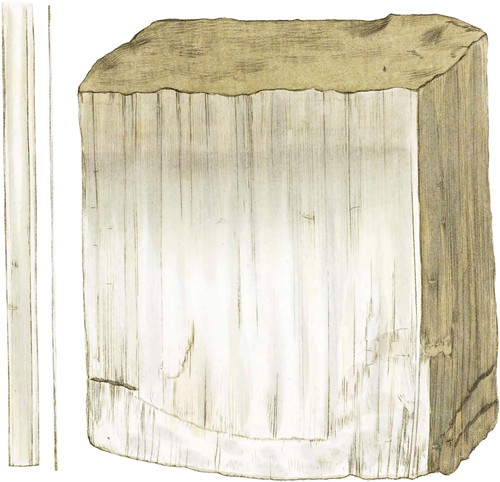 Enlarge
Enlarge
British Mineralogy
Fibrous Gypsum
- Class 2. Earths.
- Order 1. Homogeneous.
- Gen. 3. Lime.
- Spec. 3. Sulphate of Lime.
This variety is occasionally found near the others in broad veins, if I may be allowed to call them so, looking like veins on the side of the cliff when exposed, but very broad, and varying in thickness and flatness. It is not fit for carving figures, as its structure will readily show; but for making plaister, for casting, stucco or manure, it is as good as the others, and much attracts the attention of the common observer by its regular and finely striated appearance. It is remarkable for the perfect straightness of its fibres, which are sometimes four or five inches or more in length, and always divisible even beyond our limits of calculation, being an excellent example of a common fibre. Lewenhoeck might have said of this as he said of the muscular fibre, and he would have been nearer the truth—see page 40 of the second volume of this work. This variety of Gypsum has something of the appearance of the Satiny Carbonate of Lime: it, however, is not, like that, sufficiently hard to take a polish, but a fresh fracture is equally bright, whereas that has not so bright a natural fracture, and requires polishing to add to its beauty*. The fibres are so compact m some parts as to give this stone a particularly solid and glassy appearance, but in those parts they may nevertheless be easily separated, even by the ringer nail.
As Gypsum dissolves sparingly in water, the specimens cannot be washed without great care, and brushing scratches them; even the common air spoils their appearance, which is worth preserving: they should therefore be kept very attentively.
- * I have truly stated where the satin-spar is found: Late authors have very erroneously quoted Derbyshire for it, where, indeed, it has been sold.

